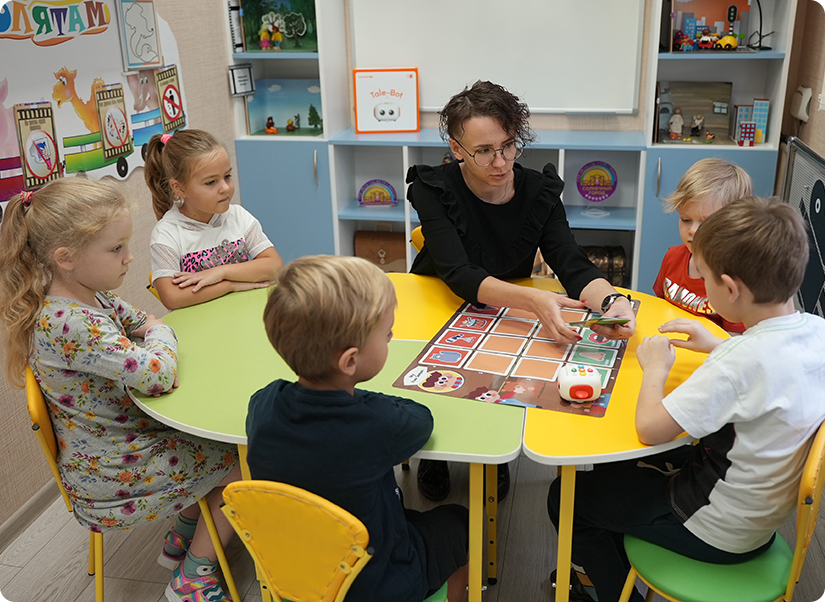How many kids are in a group
5
How was the Matatalab robot(s) used?
This kit is convenient to use in group and individual lessons. The possibilities of use are unlimited in different classes, which are conducted in accordance with the curriculum. The first steps combine interest and fear (how does this work? Can't I break it?). Now the guys themselves propose routes and topics and require more independence

What skills did it develop?
When working with a robot, the following are formed: the ability to determine the sequence of the arrangement of objects "one after another", "from left to right" and "from right to left"; transfer the orientation in the surrounding space to a sheet of paper, creating the simplest plans, schemes, and vice versa, moving according to a simple plan, find the place of the object according to the scheme; the ability to determine the position of images on a sheet of paper, based on the following landmarks: "center", "right and left upper corners", "right and left lower corners", "middle of the upper, lower, right and left sides"; navigate the environment in the direction from other objects; moving in a given direction; the ability to solve simple arithmetic problems for addition and subtraction. Spatial directions "from ... to", arbitrariness, premeditation, purposefulness of all mental processes, cognitive interest, as well as logical and mathematical methods of cognition are developing. The use of a robot in this educational activity contributes to the manifestation of the prerequisites of mathematical abilities.

What worked best and what was challenging?
Constant novelties and various stories are bright and interesting in each new lesson. It's great that you can work without special skills. Everything is simple and accessible to everyone. The capabilities of the robot allow you to develop creative imagination and qualitatively master the techniques of algorithmic thinking, the basics of programming. But for a child, all this is an exciting game. Difficulties: Different levels of abilities and training of children.
How did students respond?
Modern children are spoiled by different gadgets, but the robot managed to surprise them. Both the design itself, the set, and the functions and skills of the robot are of keen interest. The desire to help, support, complete tasks and come up with an algorithm is only a small part of what the guys want. Joy, smiles, good mood and a positive attitude to the lesson - you can go on for a long time, describe the bright spectrum overwhelming children Now the pupils are waiting for the robot at each lesson. Other guests now seem too "ordinary" for them.

Share your comments upon the class using Matatalab
can be used both for subgroup work and individually. At any stage of the lesson: at the beginning as a surprise moment; in the middle - the practical development of specific educational tasks, and also at the end - as encouragement and reflection. During the game, children are constantly interacting, which contributes to the development of communication (they learn to negotiate and plan the game, distribute roles and functions, take into account the wishes of the players, act in concert, notice difficulties, work in a team, exchange information, help other children, find ways to establish successful social contacts with peers in activities and communication, etc.) The use of an intermediary robot will contribute to the formation of new social roles, the assimilation of the rules of cultural and safe behavior.
What is the favorite function for the students?
The recording function, dancing, repeat, drawing, Storytelling, paper craft, accessories for the both sides of the robot.
Inspires the scale and horizons that Matatalab opens and helps to bring to life: contests, competition.



